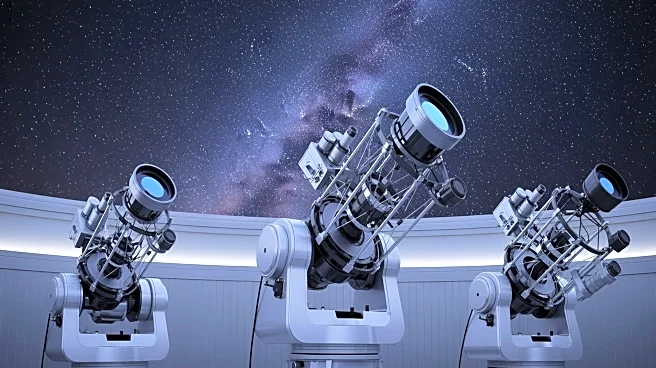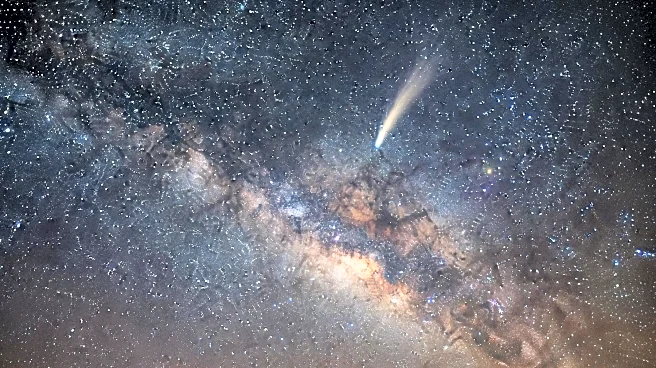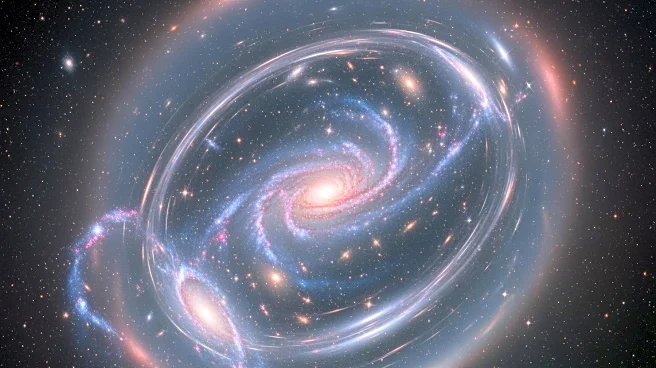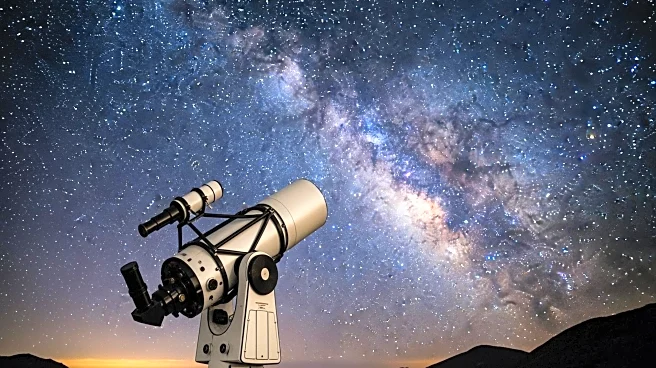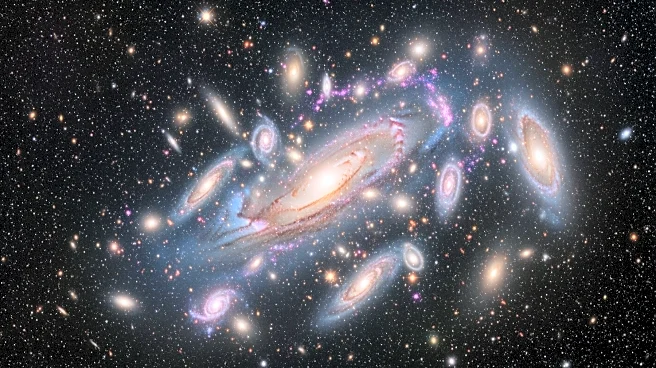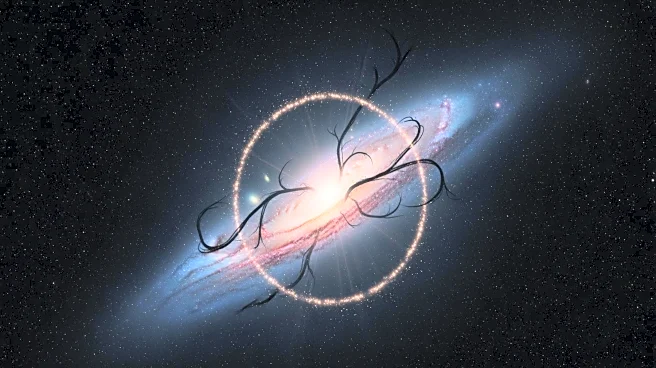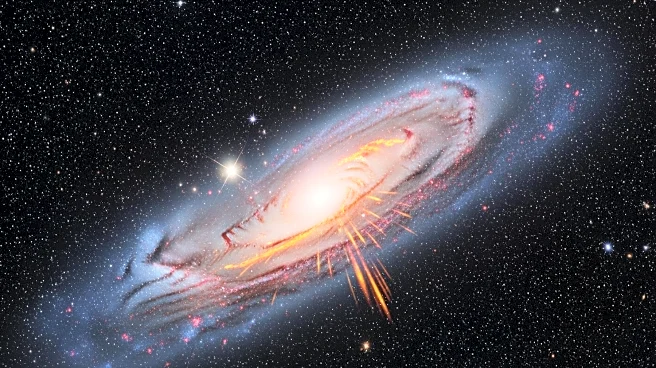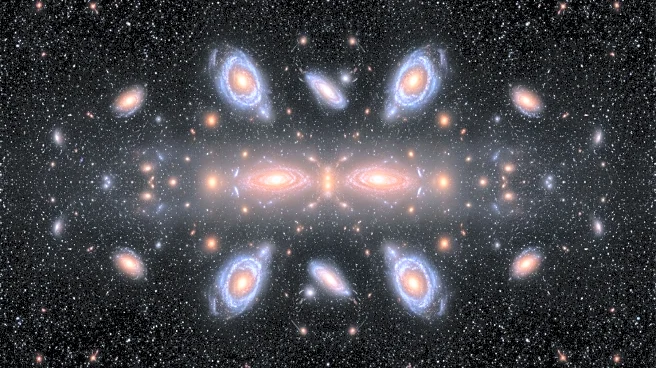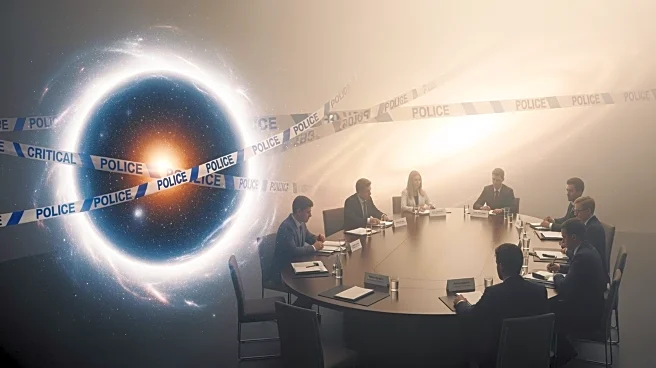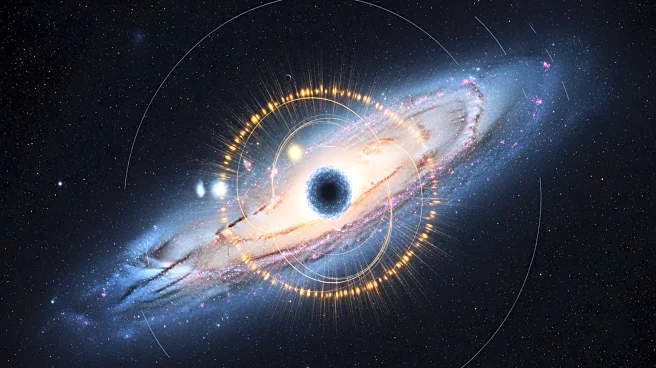What's Happening?
The Vera C. Rubin Observatory, located in the Chilean Andes, is set to embark on a decade-long mission known as the Legacy Survey of Space and Time (LSST). This ambitious project aims to scan the southern
sky every three nights, tracking the brightness, position, and movement of billions of celestial objects. The observatory is equipped with the Simonyi Survey Telescope, featuring an 8.4-meter mirror and the largest digital camera ever created for astronomy, a 3.2-gigapixel LSST Camera. The observatory will handle over 20 terabytes of data per night, organized by a specialized software system called the data butler. This initiative honors Vera C. Rubin, whose research confirmed the presence of dark matter, and aims to further understand the universe's structure and behavior.
Why It's Important?
The Vera C. Rubin Observatory's mission is significant for its potential to reshape our understanding of the universe. By tracking millions of celestial events, the observatory will provide the most comprehensive real-time record of the changing sky. This data is crucial for astronomers to study phenomena such as dark matter, which constitutes the majority of the universe's matter. The observatory's findings could lead to breakthroughs in cosmology and enhance our knowledge of galaxy formation and evolution. The project also highlights the importance of advanced technology in scientific research, showcasing how data management and analysis can drive discoveries.
What's Next?
As the observatory begins its operations, scientists and astronomers worldwide will closely monitor the data collected to identify new celestial phenomena and deepen their understanding of the universe. The observatory's findings may prompt further research and collaboration among international scientific communities. Additionally, the data could influence future space missions and the development of new astronomical technologies. The observatory's success may also inspire similar projects, expanding our exploration of the cosmos.
Beyond the Headlines
The Vera C. Rubin Observatory's mission underscores the intersection of technology and science, demonstrating how advancements in data processing and analysis can propel scientific discovery. The project also raises questions about the ethical management of vast amounts of data and the responsibility of scientists to ensure transparency and accuracy in their findings. Furthermore, the observatory's focus on dark matter highlights the ongoing quest to understand the universe's fundamental components, a pursuit that could redefine our perception of reality.
